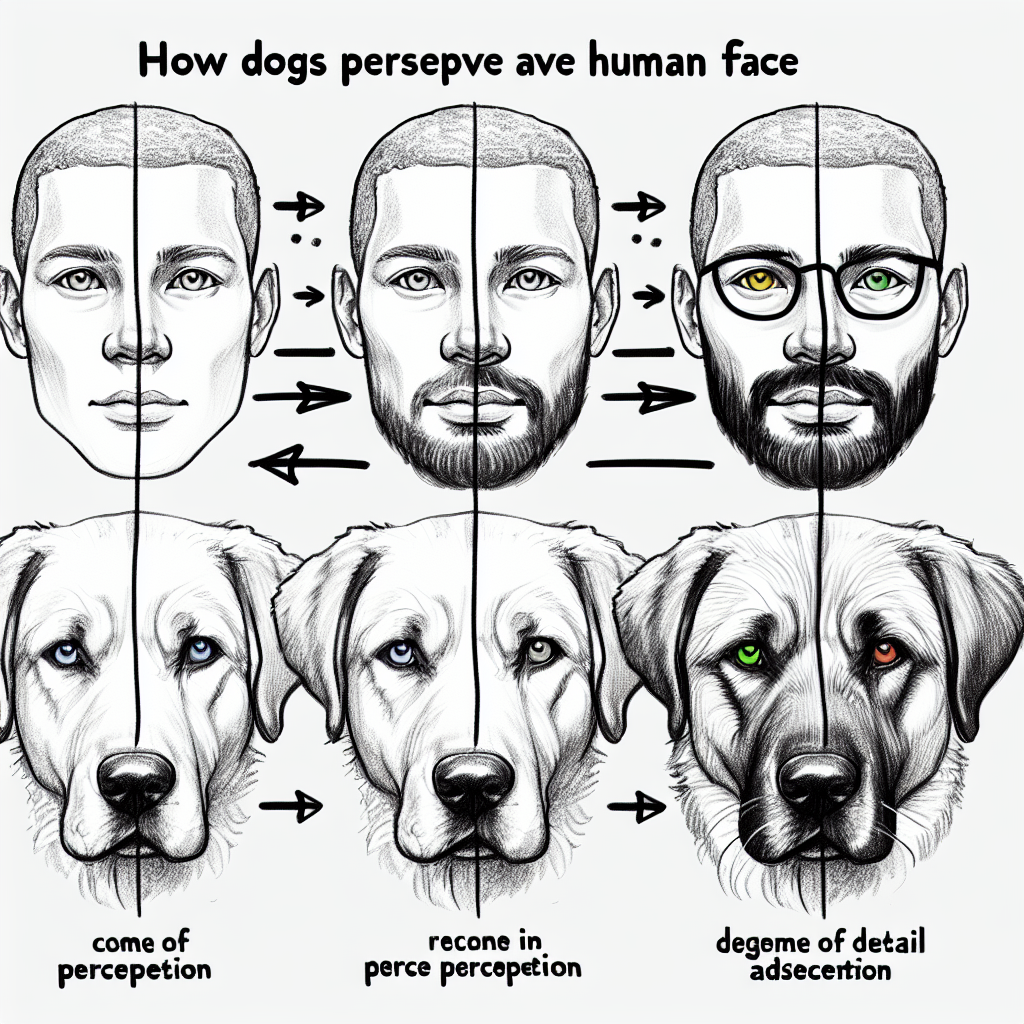===
Have you ever wondered how dogs perceive the human face? Decoding canine vision reveals an intriguing world where dogs experience human expressions differently than we do. This knowledge could bridge the communication gap between humans and their furry companions. Recognizing how dogs interpret human emotions can deepen your bond with your pet and improve interactions, making life more harmonious. As we explore this captivating subject, you’ll uncover insightful strategies for enhancing your relationship with your dog by understanding their unique visual perception.
Understanding the Unique Visual World of Dogs
To appreciate how dogs perceive human faces, we must first understand their remarkable visual system. Dogs have dichromatic vision, meaning they see a more limited range of colors compared to humans. While humans possess three types of color receptors, allowing us to discern a vibrant spectrum, dogs primarily see shades of blue and yellow, while reds and greens appear more muted. This limited color palette shapes their overall perception of the world, making their interpretation of human faces distinctly different from ours.
Additionally, dogs’ eyes are specially adapted for low-light conditions. Their retinas contain a higher number of rod cells, which are sensitive to dim light. This adaptation provides them with enhanced night vision capabilities. As a result, dogs can recognize human faces even in lower light levels than we can. This unique trait allows them to be more attuned to their owners’ presence at times when human visibility might be compromised, illustrating their instinctual bond with humans.
Moreover, the positioning of dogs’ eyes plays an essential role in their visual perception. Unlike humans, who have forward-facing eyes that provide depth perception and a wide field of view, dogs have a broader peripheral vision thanks to the positioning of their eyes on the sides of their heads. This anatomical feature allows dogs to detect movement and potential threats from various angles, although it sacrifices some degree of depth perception. Consequently, dogs excel at noticing subtle cues in their environment, which can inform their understanding of human emotions and intentions.
How Canine Eyes Interpret Human Facial Features
Canine vision is not just about colors and brightness; it also encompasses the ability to interpret human facial features. Research indicates that dogs are remarkably adept at recognizing human emotions through facial expressions. They have been shown to respond to angry, happy, and neutral faces, often displaying specific behaviors that correspond to the emotions displayed by their human counterparts. This emotional acuity is rooted in their evolutionary history as social animals, making them highly responsive to the emotional states of those around them.
Interestingly, dogs tend to rely more on facial cues than on vocal tones when interpreting human emotions. Studies have demonstrated that dogs can differentiate between happy and angry faces, often choosing to approach individuals displaying positive expressions over those with negative ones. This preference underscores their reliance on visual signals, revealing an intimate connection between canine vision and emotional communication. The ability to discern human emotions through facial expressions enables dogs to forge stronger bonds with their human companions, ultimately enhancing the human-canine relationship.
Furthermore, the unique structure of dogs’ eyes, including a reflective layer called the tapetum lucidum, enhances their ability to see in low-light conditions. This adaptation allows dogs to pick up subtle changes in facial expressions that humans might overlook. In practical terms, this means that when a dog gazes at you, they might be interpreting your emotions based on your facial expressions, even in dim lighting. This profound insight into canine vision illuminates the ways in which dogs navigate their social world, allowing them to bond with humans on a deeper emotional level.
===
Understanding how dogs perceive human faces opens up new avenues for enhancing your relationship with your furry friend. By appreciating their unique visual world, you can adjust your interactions to better connect with them. As you engage with your dog, consider how they interpret your emotions through your expressions—a smile may be met with excitement, while a frown could prompt concern. This newfound understanding can serve as a foundation for more profound communication and connection with your pet. Embrace the insights shared in this article to create a more enriching environment for both you and your dog, fostering a bond built on mutual understanding and empathy.
Measuring Your Dog’s Height: A Comprehensive GuideUnderstanding How Dogs Become Infested with FleasUnderstanding the Lifespan of Pug Dogs: What to ExpectRelevant LinkRelevant LinkRelevant Link
